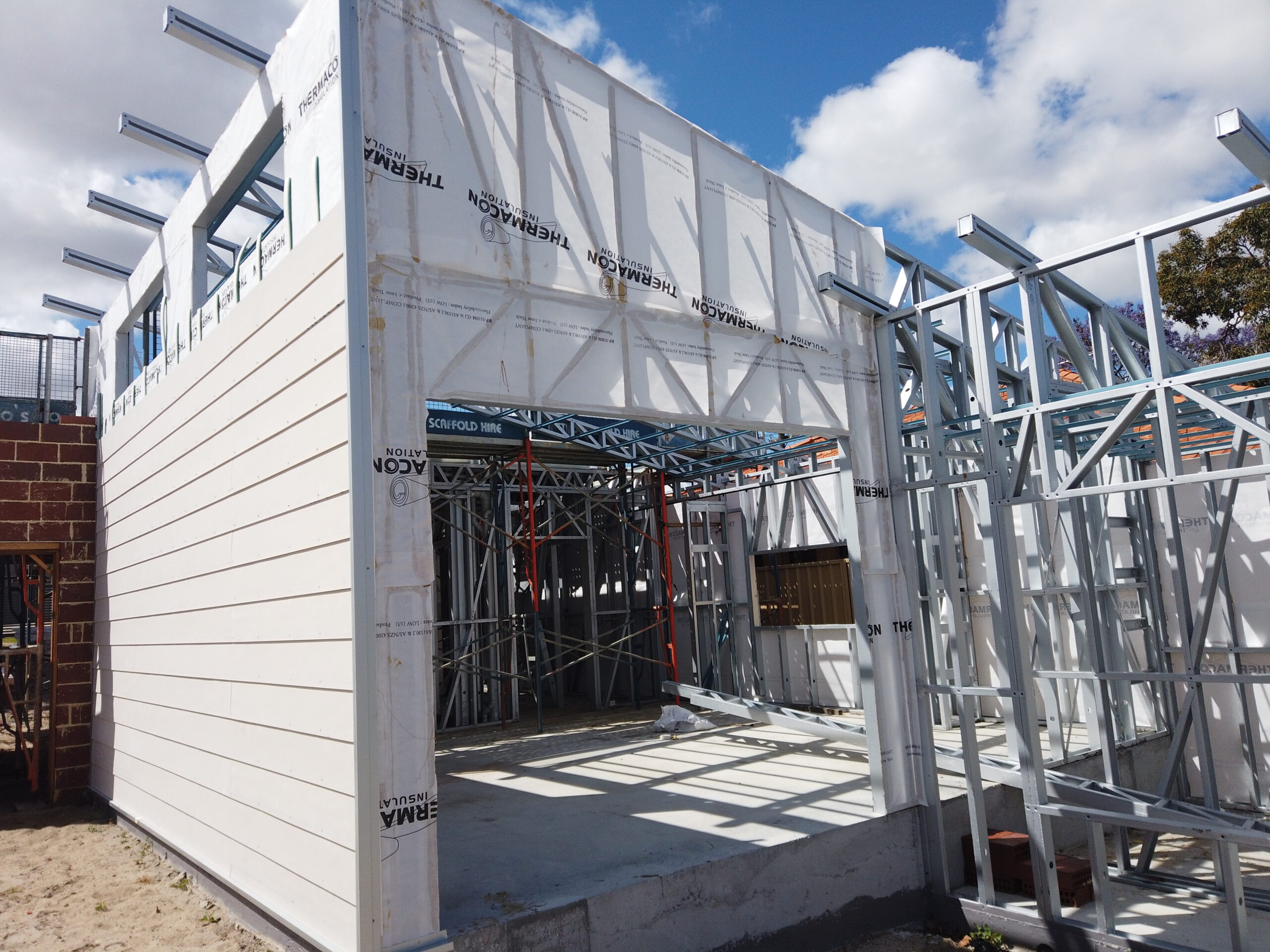Designing a home is an immense challenge, where every detail matters, from the structural components you select to those supporting and holding up the roof. Rafters have stood the test of time, providing vaulted ceilings and an enduring appeal. However, because roof rafters can be costly, people have sought a more budget-friendly alternative. Enter trusses, which are prefabricated webbed units.
Both of these options come with their pros and cons that you must grasp to make an informed decision when choosing the ideal roofing system for your home.
What are Roof Trusses?
A roof truss is a prefabricated structure integrating a triangular webbing that supports the roof while ensuring all outside walls are kept and tied together.
Trusses effectively support the roof’s weight, distributing it to load-bearing walls or columns. They are constructed with various straight members, such as top chords or horizontal members found at the top, whilst the bottom chords are the opposite. On the other hand, Web members are the vertical and diagonal members connecting the top and bottom chords. Each member works together, forming a triangle that gives the structure reliable strength and stability.
To connect truss members, gussets or joint plates are used, securing them so that the truss can withstand the loads placed and will not move.
Pros and Cons of Roof Trusses
You may want to consider roof trusses for the following pros:
- Roof trusses are more cost-effective, especially when compared to rafters and other traditional joist systems. Not only do they require less material, but they also require less construction time and labour.
- Because trusses are prefabricated offsite, they are perfect for projects with a tight schedule. They are often delivered in correct sizing and shape, minimising the need for cutting and other extra tasks. All that’s required is to assemble them onsite.
- Trusses, especially steel roof trusses, are engineered to be durable, stable, and robust. You can rely on them to support heavy roof loads. That’s why they’re perfect in places with snow and strong winds.
- Trusses are precise and uniform, leading to reduced structural issues and the need for repairs.
- One more benefit is that roof trusses can span longer distances, even without internal support. That means the interior spaces are more open and versatile.
Meanwhile, here are the cons to be aware of:
- Some homeowners find exposed timber look pretty appealing. Unfortunately, that’s something that trusses don’t offer, as they are typically hidden from view.
- Trusses have internal webbing, which results in limited usable roof space.
- Whilst we have mentioned that trusses allow for customisation, it takes work to modify them onsite.
Where to Use Trusses
Trusses are practical and versatile, so you can use them in various construction projects, including residential and commercial buildings. Whether you have a single-family home or multi-unit housing, trusses, along with custom homes and office buildings, are perfect for these structures. Thanks to their consistency and stability, they are also commonly utilised in retail spaces, warehouses, and distribution centres.
Many recreational facilities, such as sports arenas, stadiums, fitness centres, theatres, museums, and entertainment centres, also use roof trusses. You can also find them in agricultural buildings, including silos and barns, as well as manufacturing plants and facilities that carry heavy machinery.
What are Rafters?
A classic option that’s easy to recognise, a roof rafter is the traditional means of roof framing. The method is mainly known as stick framing, where each rafter is built on the construction site using dimensional lumber. All the pieces are precisely measured and cut before fastening them together to create the rafter. This process is quite labour-intensive, especially if you compare it to trusses.
Pros and Cons of Roof Rafters
Here are some of the benefits:
- If you love the exposed, traditional timber look to achieve that rustic or classic charm, rafters are a good option.
- You can cut and adjust rafters onsite, allowing you different shapes and styles.
- If you want to increase roof space, rafters are a better choice than trusses.
Rafters may not be for you if you find the following aspects necessary:
- Rafters are more expensive than trusses. It is costlier if you intend them to be more customisable.
- Cutting, modification, and installation require skill.
- If you are pressed for time, choosing rafters is not a good idea as they take longer to cut and install.
- There is a limitation span; therefore, rafters require extra support, including ceiling joists and collar ties.
- Rafters are much more difficult to maintain, although complexity will depend on the material it is made of and the design.
- Consistency is a problem, especially for those cut on-site, leading to differences in the roof structure.
When are Rafters Typically Used?
Rafters are well-suited for custom-built homes, offering the flexibility to accommodate unique preferences, such as exposed timber beams and vaulted ceilings. They are also excellent for renovations and restorations of older buildings, preserving their historical authenticity. For projects requiring open and large roof spaces, rafters are far superior to trusses.
The Differences between Rafters and Trusses
The most noticeable difference is that trusses are generally built with 2x4s and not wide-dimensional boards. Less material is used, but they are more robust, specifically if made of steel.
Another significant difference is that rafters are often showcased, although some prefer them to be hidden. Trusses, on the other hand, are generally never installed as an aesthetic feature.
5 Benefits of Using Roof Trusses over Rafters
Although rafters are unarguably a timeless option, trusses trump rafters for several reasons. Here are five advantages that will convince you to choose trusses over rafters any day:
1. Manufactured Before Arriving Onsite
Trusses are made in a controlled environment, meaning they are double-checked for quality and errors before delivery. The manufacturing process is automated, ensuring that trusses arrive at the construction site on time. Rafters are not as speedy and easy to form. You have to assemble them onsite one by one. Although they may be cheaper, the long process can immediately result in a hefty bill.
2. Quicker to Install
Trusses can be installed in as little as one day if you’re working on a 250-square-metre home, assuming you have skilled workers with the right tools. Therefore, you save a lot of time even if you have a massive construction project.
3. Affordability
Upfront, you may think trusses are expensive, generally because of the prefabrication that increases the initial costs. However, you get to install them quicker and easier, needing less time and manual labour. Rafters also utilise more lumber. If the wood prices increase, so do the rafters’ costs.
4. Suitable for Large Structures
The average size of homes has grown by 74% across Australia compared to 1910. That’s why we see more homes using trusses today and not rafters.
5. Environment-Friendly
Trusses are kinder to the environment than rafters. They use less steel, and there’s generally little to no waste. Therefore, they have a much lower impact on the environment. Many steel roof trusses come with steel plates, increasing their load-bearing capabilities even more without needing wood. So, with less steel, you create a happier and healthier planet for everyone.
Conclusion
As construction methods continue to improve, trusses, specifically steel roof trusses, are more convenient and faster than rafters. They are the future, especially for medium to large-sized builds. Premade to exacting standards, steel trusses from Steel Frames WA are straightforward to work with, from placing and levelling to fastening and bracing. Along with cost-efficiency and durability, it’s easy to see why our steel roof trusses are the dominant choice for a custom home, commercial space, or restoration project.





